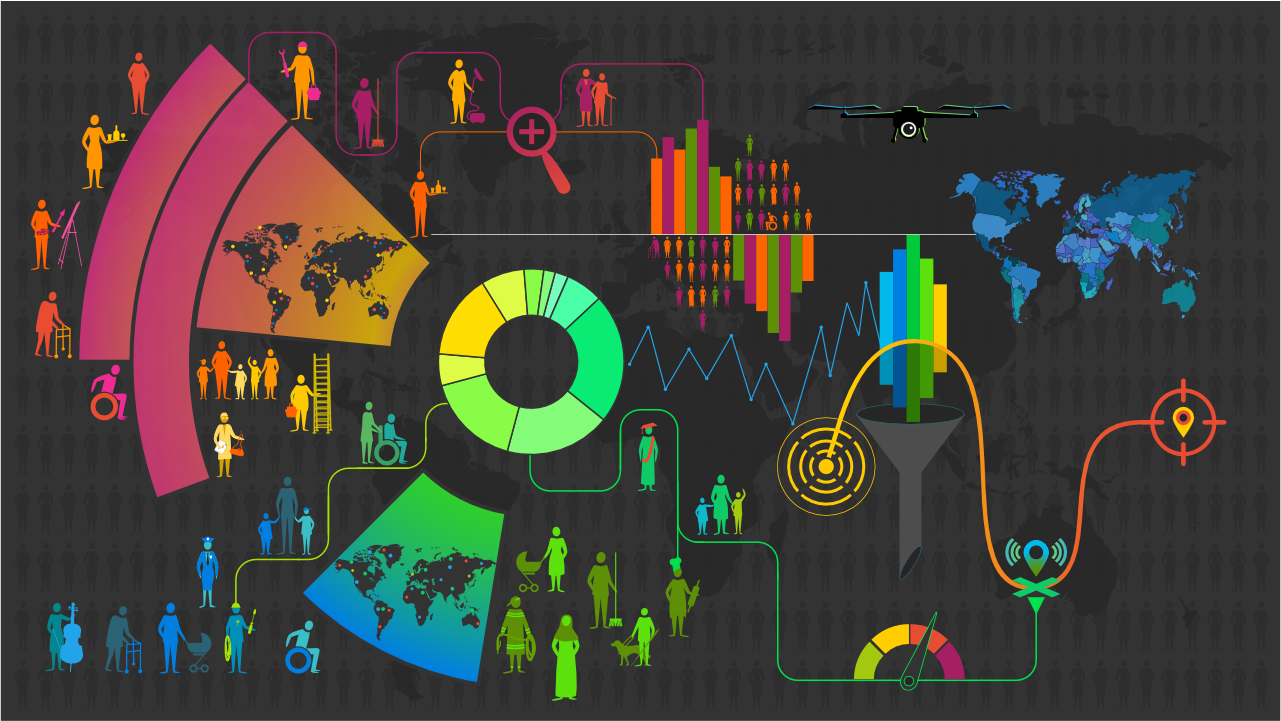The collection and analysis of data about us now occurs across many aspects of everyday life, but how do people come to understand these complex processes? Drawing on Living With Data research, Susan Oman, Hannah Ditchfield and Helen Kennedy show that people’s understandings of data uses are based on past experiences and predictions about the future.
News about what happens to our personal data is never far away. Last month, another major data breach was announced, this time by the Australian telecommunications giant Optus. Around the same time, new rules to help people harmed by Artificial Intelligence systems trained on huge amounts of data were published in Europe. This summer, one of the debates resulting from the US supreme court’s decision to overturn women’s constitutional right to abortion was whether data captured by period tracking apps could be used to prosecute women for getting illegal abortions. Data pervades our lives, but how much do people understand it?
Understanding what happens to our personal data is a prerequisite to forming views about what we want to happen to it. And yet, it is rarely the focus of research and discussion, in policy, practice and research circles and is often overlooked (research by one of us, Susan, being an exception). This lack of attention to processes of understanding data uses is surprising, given how difficult it is to understand how data about us is collected, analysed, shared and used. Difficulties can arise for a number of reasons: data uses themselves are complex, explanations are long and hard to follow, perhaps by design, or they may not be available at all.
Claims that clear and transparent information about data uses and improved data literacy are the best solutions to misunderstandings of data uses are based on assumptions that more understanding of data uses will solve data-related challenges, such as people’s limited trust in how organisations use their data. It is therefore vital to consider how people come to understand data uses.
Living With Data, a research project which aimed to understand people’s perceptions of how data about them is collected, analysed, shared and used, produced valuable findings in this area. On Living With Data, we carried out two waves of a survey of public attitudes to public sector data uses (n = 2000 x 2) and a series of focus groups and interviews (n = 112) on the same topic. We focused on data uses in welfare, media and health:
- BBC experiments with giving people more control over their data;
- DWP uses of data in online identity verification;
- NHS health data aggregation and re-use.
We produced visualisations of six public sector data uses, through iterative processes, involving a professional visualisation designer and experts in accessible communication. An example of the NHS Covid-19 Data Store is reproduced below; others can be found on our Living With Data website.
Clear information does not result in understanding
Throughout our research, we found that clear information about data uses does not result directly in people understanding them. Focus group and interview participants often assumed that there was more to these data uses than what they saw or were told in our discussions with them, despite our efforts to produce clear and accessible visualisations.
For example, they imagined differences between how data uses are said to work in theory and how they actually work in practice. Or they imagined what might happen to data in the future, if governance arrangements or prevailing norms change. Talking about the UK Census, which collected data on sexual orientation and gender identity for the first time in 2021, Matthew (not his real name), a gay man, recognised that collecting such data was important to inform the provision of services. However, he was worried that, as a gay man, he may want to protect data about his sexuality in a more dystopian future:
“You know, if the government knows that I’m gay, for example, and a particularly right wing administration comes in, they know where I live, they know where I am. They can make it a legal requirement for companies to share that data with the government. They could very quickly arrest me or whatever. That has crossed my mind. I mean, it seems like a sort of dystopian fantasy but at the same time, it’s possible. I mean, it’s happened in the past in history and so it’s the thing of you don’t trust Facebook, but you do trust the government, but why? I mean, it’s not as though politicians are morally superior to business people. They’re often the same thing.”
We use ‘imagining’ to mean building a mental image of something that is not present at the moment of expressing an opinion. We are not suggesting that the things that participants imagined were imaginary – that is, existing only in the imagination. Rather, participants imagined and supposed things to fill in assumed gaps, possibly because historical data misuses, security breaches and lack of transparency led them to assume that there must be information missing from our accounts. Participants imagined what happens to data, how data processes work and how they impact disadvantaged groups, to work around the challenges of understanding data uses. The fact that participants often imagined that there was more to data uses than what they saw or were told shows that the link between information and understanding is complex.
participants imagined and supposed things to fill in assumed gaps, possibly because historical data misuses, security breaches and lack of transparency led them to assume that there must be information missing from our accounts
The implications of imaginings
The role of imagining in people’s perceptions of and attitudes towards data uses has important implications for data policymakers and practitioners. It suggests that more information about data uses will not necessarily result in more understanding of them, although addressing what matters to people in explanations may help. In other words, how data uses are communicated to diverse members of the publics is as important as ensuring they are communicated. Communications about data uses should be motivated by a genuine desire to enable understanding, and it should relay information that is of interest and meaningful to diverse publics. Communication about data uses needs to make it possible for people to understand what happens to data. It should speak to people’s concerns about what might go wrong, what might change in the future and how disadvantaged groups might be affected. Historical data misuses and security breaches may lead people to assume that there must be information missing from accounts of data uses, but more research is needed to provide empirical evidence of whether this is the case.
more information about data uses will not necessarily result in more understanding of them
More importantly, all stakeholders in our data-driven society need to commit to supporting a change of culture around data uses, in which data is not misused, security is not breached, and transparency is sustained and purposeful. This is because what has happened in the past can influence how people perceive data uses in the present. If data uses are improved in these ways, then public perceptions of them may also improve in the future.
The content generated on this blog is for information purposes only. This Article gives the views and opinions of the authors and does not reflect the views and opinions of the Impact of Social Science blog (the blog), nor of the London School of Economics and Political Science. Please review our comments policy if you have any concerns on posting a comment below.
Image Credit: Reproduced with permission by Living With Data.









